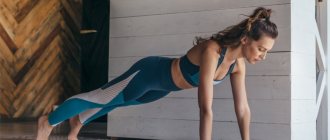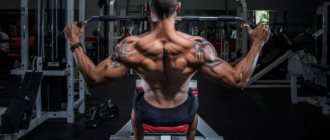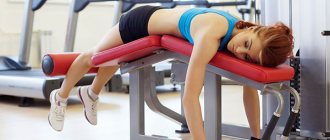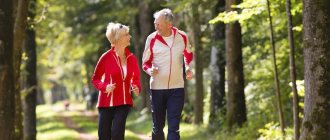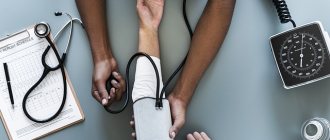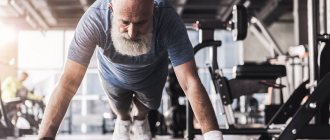First, let us remind you: during a pandemic, you simply will not be allowed into a fitness club with a temperature - in most gyms this is strictly monitored. But the person responsible will not go there himself. “This is unethical in relation to others,” emphasizes Natalya Polenova, Ph.D., family doctor, cardiologist, nutritionist at GMS Clinic. — The peculiarity of the new coronavirus infection is that the opportunity to infect others may appear even earlier than clinical symptoms, and there is nothing we can do about it. But going to an indoor fitness club with existing symptoms of the disease is a real crime against society.”
But in this case, is it worth training with the temperature at home? Hardly.
What happens in the body during ARVI
Fever, runny nose, cough are signs that pathogenic microbes have entered the body. “Elevated body temperature means that microorganisms that cause respiratory diseases have entered the blood and began to circulate throughout the body, choosing where to settle,” comments Natalya Polenova. — A rise in body temperature leads to increased heart rate and respiratory movements, and loss of fluid from the surface of the body and mucous membranes. Symptoms of intoxication develop, which any additional load only aggravates. We are no longer talking about any muscle growth, an anabolic process (which requires additional energy): the body devotes all its strength to fighting the infection.”
But despite this, some fitness fans still strive to train in this state.
How to prevent the development of colds and strengthen the immune system?[edit | edit code]
- Take a vitamin-mineral complex 2-4 times a year
- A meta-analysis of 25 clinical studies[2] showed that regular intake of vitamin D can reduce the likelihood of acute respiratory diseases and influenza.
- Don't get overtired
- Take Glutamine
- Take extra vitamin C during an epidemic
- Take echinacea extract (a herbal immune modulator) during an epidemic
- Practice hardening
Exercising for colds: yes or no
Doctors and trainers advise against exercising if you have cold and flu symptoms.
Firstly, training when you have a cold is a real test for the body. “If you have a fever, runny nose or cough, you can forget about the normal functioning of the cardiovascular system,” notes an employee of one of the areas of group programs at a sports center in Russia. — If you feel normal during a fitness class, a person’s body temperature can rise to 38.5˚C. If you come to training with symptoms of ARVI, you complicate the work of your heart.”
And even if you just have a sore throat, you shouldn’t go to training either - this symptom indicates an inflammatory process in the body. This means that you still won’t be able to train fully.
Secondly, exercising while sick is not beneficial. “When we are sick with ARVI, all the body’s forces are spent fighting the infection,” says the head of the rehabilitation department of one of the medical centers, a sports medicine doctor, a physical therapy doctor, and a manual therapy doctor. — Training in this state is difficult mentally and physically, they take place at an increased heart rate and are catabolic in nature. That is, the muscles will not only not grow after them, but may even be “destroyed” in order to provide the body with energy to perform exercises. This means that the effect of the training will be negative.”
Thirdly, by attending training while sick, you risk complications. “When the body is weakened by the virus, fitness classes can intensify the manifestations of the disease and complicate its course, since increased blood flow can facilitate the penetration of the virus into other organs and tissues, which will cause additional inflammation in them,” says Alexander Kolesov. “In addition, against the background of a decrease in general immunity, a secondary infection may occur or one’s own opportunistic microflora may cause a new disease. This is especially dangerous because the damage can affect vital internal organs, such as the heart (myocarditis) or kidneys (glomerulonephritis, pyelonephritis), which is fraught with chronic diseases and a ban on sports even after recovery.”
Yes, and fitness goals - losing weight, pumping up, becoming more flexible - cannot be achieved in classes with ARVI, flu, sore throat and any other viral disease. “During illnesses, the immune system draws on the body’s resources in order to quickly defeat the infection. And during training you need a lot of energy. Running, strength and functional loads, Pilates, mind&body classes - they all consume your energy both during training and after for recovery. It turns out that you are trying to “keep up with two birds with one stone” - to pump up and get healthy, but you won’t succeed in either.”
Are there activities that can help you cope with a cold?
A cold (an acute viral infection of the respiratory tract) can be dealt with by the body's immune system. There is no specific physical activity that can help.
Photo: istockphoto.com
We do not know how to “strengthen the immune system”; today medicine can only suppress it, and quite crudely. It is still possible - and necessary - to make efforts to prevent the disease.
Can I go for a light workout?
Unfortunately no. “When ARVI and influenza manifest themselves, any training is prohibited. Even stretching, yoga or roller flexing can backfire. Wait until you have fully recovered and your doctor gives you permission to start training. Take care of your health, it is priceless,” warns an employee of one of the medical centers.
Do you feel like you're getting sick? Give up sports. “If you begin to experience symptoms of illness, I would advise you to refrain from any physical activity and devote your free time to a walk in the park or recreational activities,” says the group training leader. — Don’t worry, most of the indicators will remain at the same level for a certain amount of time. Muscles lose their strength after 2 weeks of lack of targeted training, endurance decreases after 3 days, but it will not be difficult to restore the level already achieved. And with a balanced diet and a healthy regimen, your figure will practically not suffer due to a temporary decrease or lack of exercise.”
Focus on restoring your health: rest, drink plenty of warm fluids, ventilate the room more often, follow your doctor's recommendations. You’ll get back to fitness later.
It is very important to eat a balanced diet for faster recovery. “To fight infection, it is necessary to build immunity, antibodies, and therefore eat protein. It is clear that during intoxication, appetite is reduced, and volitional efforts will have to be made. Let me remind you that protein is not only fried steak, but also yogurt, cottage cheese, omelet, and just egg white. Any of these products, in combination with competent drug treatment, sufficient water consumption and a gentle regimen, will help quickly defeat the disease,” notes Natalya Polenova.
Allowed actions
If you really want to play sports and have the strength for it, then you can do it in an easy way and at a calm pace:
- do some stretching;
- try joint gymnastics;
- work with your own weight.
Training when sick should be short and not intense. Don't overdo it, there's no point in it now. As soon as you feel tired, dizzy or otherwise worse, stop.
When can you return to training after a cold?
It will take some time. “You can return to intense training no earlier than 14 days after your body temperature has returned to normal,” the medical officer adds.
Trainers recommend returning to fitness after your doctor allows it. It is worth entering the training mode smoothly. “Give priority to activities that restore body mobility; it will be good to roll all the muscles and ligaments on rollers. Why? Due to decreased activity, the chemical processes in the muscles slow down and we lose our freedom of movement. She needs to be returned,” explains the fitness trainer.
The next step should be low intensity cardio training. “It will allow the work of the cardiovascular system to return to the right direction. But watch your heart rate: the pulse should not exceed 140 beats/min for young people and 110 beats/min for older people. You must move easily."
After this, you can return to training at your usual intensity. “It’s best to contact an instructor who can select a lesson based on your condition and monitor it,” sums up the fitness trainer.
As you can see, even with minor symptoms of ARVI, experts advise skipping training and allowing the body to recover.
Exercises during recovery
If you feel that your muscles have lost tone during your illness, you should not immediately start high-intensity training with huge weights. If the break was 1-2 weeks, then at first it is recommended to train using the full-body system - that is, load all muscle groups in one workout. As part of this scheme, the athlete performs one exercise in 2-3 approaches for each muscle. Give preference to basic movements in which you feel the muscles working well. You can be guided by the same principles, but do it in a circuit training format, so the intensity of the training will be higher.
An approximate training option for all muscle groups during the recovery period after illness is as follows:
| Muscle group | Exercises | Number of approaches and repetitions |
| Shoulders | Standing dumbbell swings | 3x12-15 |
| Pectoral muscles | Bench press on an incline bench | 4x8-12 |
| Biceps | Barbell curl | 3x12-15 |
| Triceps | Close grip bench press | 4x8-12 |
| Back | Wide grip pull-ups | 4x12-15 |
| Press | Hanging Leg Raise | 3x15-20 |
| Quadriceps | Squats | 5x6-10 |
| Biceps hamstrings | Deadlift on straight legs | 4x8-12 |
| Calf muscles | Calf raises in the gym | 4x15-20 |
This scheme is just an example of how you can train for the first time after recovery. Exercises, order of muscles trained, number of approaches and repetitions may vary. All sets should be moderately intense - do not work to failure. Rest according to how you feel: for more isolating exercises, such as shoulder and arm exercises, the interval should be no more than one and a half minutes. For basic movements like squats and deadlifts, rest until your breathing rate is fully restored: this usually takes about three minutes.
If you decide to take a break from training in the gym, but don’t want to lose tone, you can do a few light cardio workouts during the recovery period. Standard aerobic exercise for fat loss and endurance requires maintaining your heart rate at 70% of your maximum (calculated by the formula: 220 minus your age). But while the body is weakened, it is better to maintain heart rate at 55-60% of maximum values. Cardio will help get rid of excess water and subcutaneous fat that you may have accumulated during your illness.
After 3-4 full-body workouts, switch to your standard split program. By this point, you will have fully recovered from your illness, and your muscles will be ready for full strength training.
